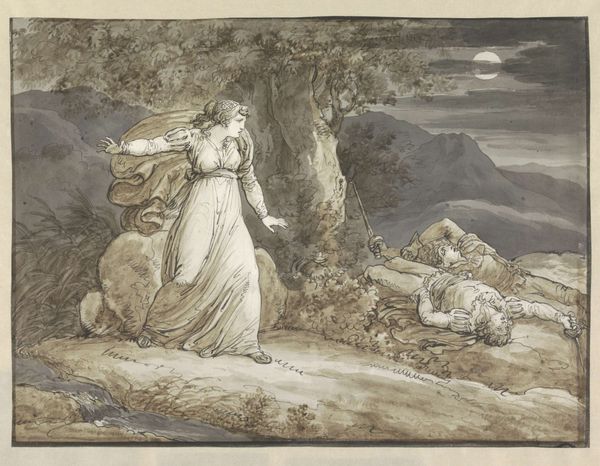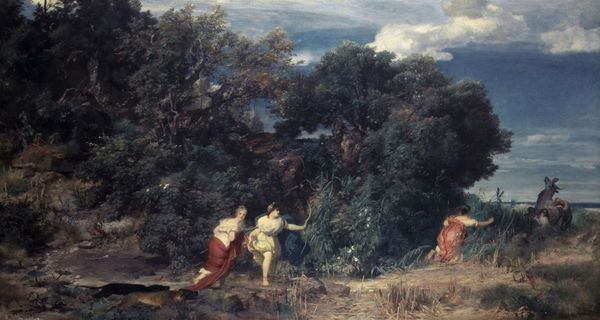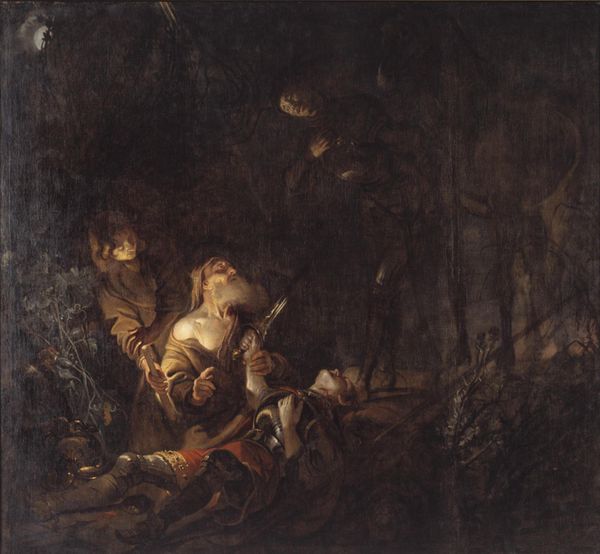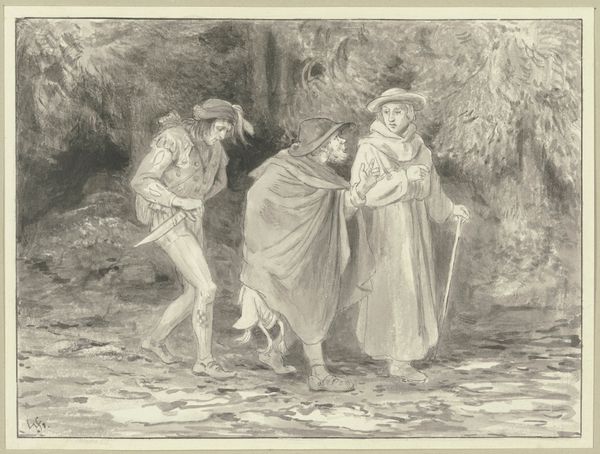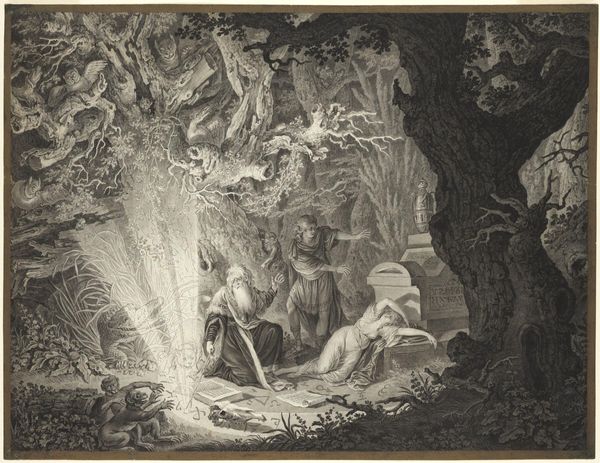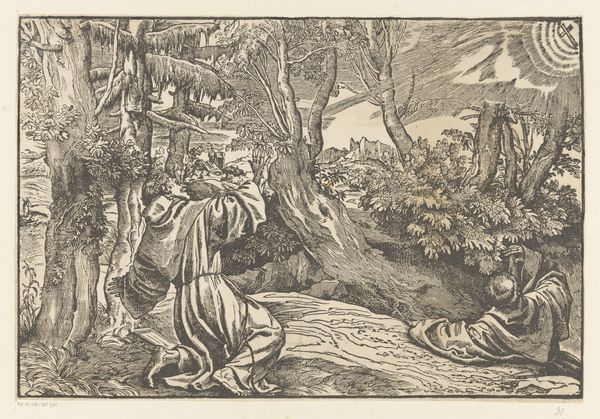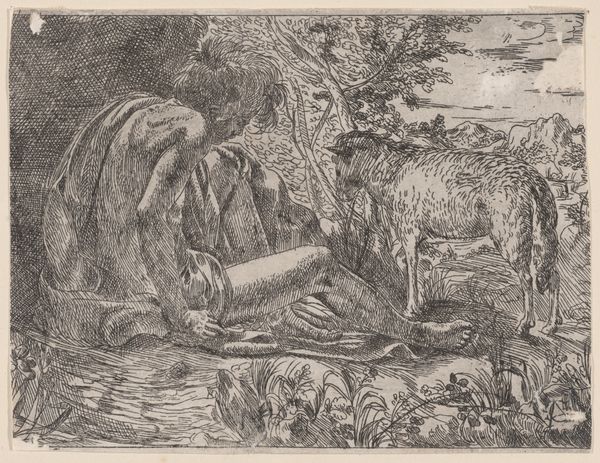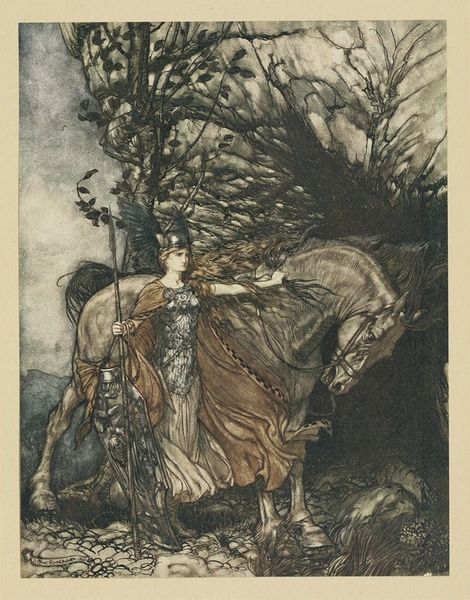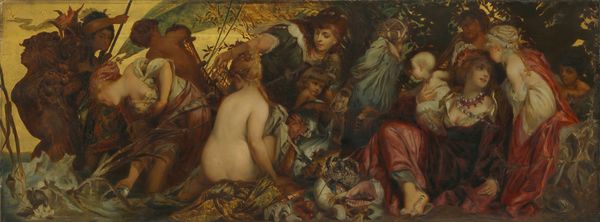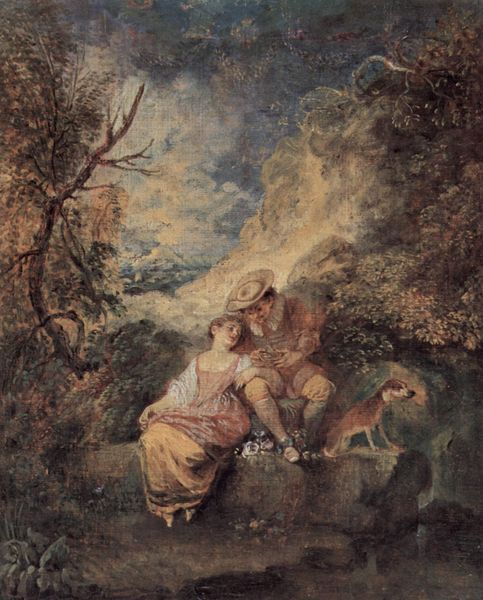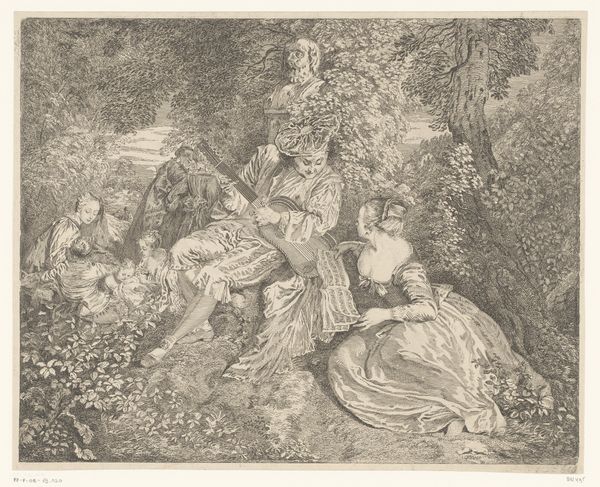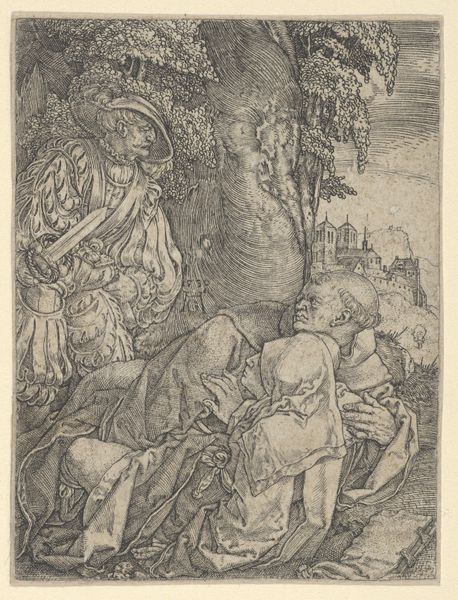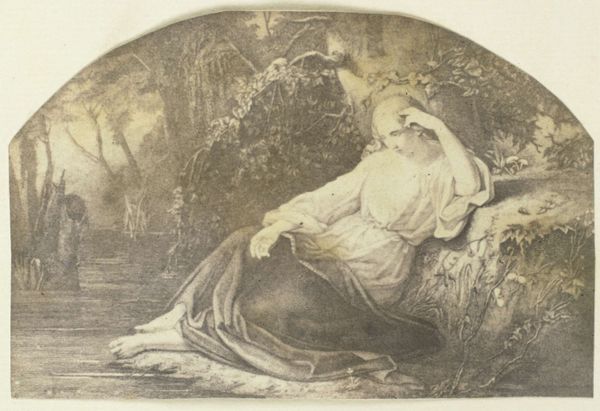
Dimensions: support: 508 x 610 mm
Copyright: CC-BY-NC-ND 4.0 DEED, Photo: Tate
Editor: This is Thomas Stothard’s "Diana and her Nymphs Bathing." It feels like a peek into a private, almost illicit, moment. What are your thoughts on how the materials contribute to the story? Curator: I am intrigued by the drapery, a deep crimson that frames the scene. It signals wealth and privilege but also, perhaps, a stage. What kind of labor produced this painting? Where did Stothard source his pigments, and how does that relate to the subject matter? Editor: So, you're thinking about the social and economic implications embedded in the paint itself? Curator: Precisely. The very materials, the canvas, the pigments, the brushstrokes – they all speak to a network of production and consumption that shaped Stothard's world. Editor: I hadn’t considered that. Thanks, this gives me a lot to think about. Curator: Indeed. The materiality of art invites us to consider broader systems of power and influence.
Comments
tate 8 months ago
⋮
http://www.tate.org.uk/art/artworks/stothard-diana-and-her-nymphs-bathing-n00320
Join the conversation
Join millions of artists and users on Artera today and experience the ultimate creative platform.
tate 8 months ago
⋮
This subject is loosely based on the Metamorphoses by the Roman poet, Ovid. Diana, goddess of the chase, is interrupted by a hunter, Actaeon, while bathing. She punishes him by turning him into a stag, and he is eaten by his own dogs.Stothard here shows a debt to the colouring and sensuality of Venetian painting, such as Titian's Diana and Aacteon, which had been bought by the Duke of Bridgewater in 1798. The London art market had boomed after the French Revolution, and the growth of great private collections which were open for viewing was an important influence on artists. Gallery label, May 2007
